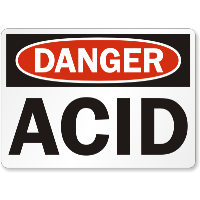Are “Acid Jobs” a Bigger Environmental Threat than Fracking for Oil and Gas?

They haven’t made a Hollywood movie about them yet, or even an independent documentary, but so-called “acid jobs” are starting to garner the kind of attention that hydraulic fracturing, otherwise know as “fracking,” has been receiving the past few years.
California regulators are currently working on rules, and the state is pondering legislation, which would require, for the first time, that oil and gas drillers disclose where they are fracking and what type of chemicals they are blasting into the ground with pressurized water. Fracking has been linked to groundwater contamination, air pollution, releases of methane gas, micro-earthquakes and sink holes.
But while lawmakers try to decide how much of this information energy companies should be able to protect as trade secrets, Democratic state Senator Fran Pavley says a lesser-known cousin of fracking—acid jobs—may pose an even larger threat to the environment and health of Californians.
Acidization injects large amounts of hydrochloric or hydrofluoric acid into wells to dissolve rock formations and allow easier access to gas and oil. It would be especially effective if California moves forward on tapping the Monterey Shale in Central California, where an estimated 15.3 billion barrels of oil trapped in porous rock has energy industry officials and politicians salivating.
Acidization is a subject state regulators don’t want to talk about, or can’t for lack of information from the industry. Pavley, the sponsor of Senate Bill 4 fracking legislation, pointedly asked the California Department of Conservation and its Division of Oil, Gas & Geothermal Resources (DOGGR) last May to share with lawmakers what they know about the process and its use in California and the nation.
The response (pdf) from Department of Conservation Director Mark Nechodom was less than satisfying. “We do not have specific information on well stimulation operations in a searchable database, nor do we have the resources to dedicate to review thousands of scanned documents,” Nechodom wrote to Pavley and Assemblyman Wesley Chesbro.
He then goes on to list six different fracking techniques, including a couple of acid methods, but says the department pretty much confines itself to overseeing the “permitting event” of well construction and operation, “rather than the drilling well stimulation treatment.”
Pavley found the response pretty worthless and implied it was also a tad deceptive, pointing out in a July 24 release that the department has declined, over the past three years, the Legislature’s offer to fund additional staffing resources.
She quotes Briana Mordick, a staff scientist at the Natural Resources Defense Council and a former senior geologist for Anadarko Petroleum Corp., on what it means:
“Director Nechodom’s response confirms what we suspected, which is that DOGGR doesn’t know what, where, when, or with what chemicals well stimulation is being used in California.”
So, Pavley and Chesbro wondered, based on the department’s knowledge, are fracking and acid stimulation safe, efficient and necessary? Nechodom finally had a question he could answer. “The petroleum industry has extensively studied oilfield safety, and implements policies and procedures to ensure safe operations, including well stimulation operations.”
Nechodom suggested that the state needn’t jump the gun. “Once well stimulation warranting additional review or data capture is defined, the Division may capture and review data to track the range of well stimulation treatments.”
Or it may not.
-Ken Broder
To Learn More:
California State Senator: Dangerous Chemicals Being Pumped Underground without Oversight (by Rory Carroll and Braden Reddall, Reuters)
Beyond Fracking: Injecting Acid into the Ground—Really? (by Andrew Grinberg, Clean Water Action)
California Senators Want More Information on Oil Well “Acid Jobs” (by Braden Reddall, Reuters)
Insight: California Environmentalists Fear Frack Fight a Distraction (by Rory Carroll and Braden Reddall, Reuters)
Federal Judge Blocks U.S. Drilling Leases that Ignored Dangers of Fracking (by Ken Broder, AllGov California)
- Top Stories
- Unusual News
- Where is the Money Going?
- Controversies
- U.S. and the World
- Appointments and Resignations
- Latest News
- Trump to Stop Deportations If…
- Trump Denounces World Series
- What If China Invaded the United States?
- Donald Trump Has a Mental Health Problem and It Has a Name
- Trump Goes on Renaming Frenzy






Comments